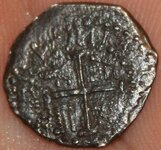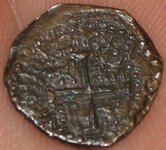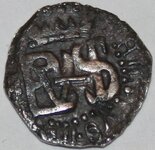IndianRiverSonrise
Sr. Member
- Jun 16, 2007
- 270
- 3
- Detector(s) used
- Various
I know some of you have seen some of these photos on the blog, but I forwarded the photos here to see what additional info I might be able to learn about it from you guys. I'm told it could be improved by further cleaning and toning. There are a number of features on it that I haven't figured out yet. And I don't have a real good match on it from my reference books. Any features you notice that you can identify or comment on, I'd like to hear about it. Its about 1.3 grams. Unfortunately some of the photos are not correctly oriented, but they were the clearest ones and I wanted to get them transferred while I had the chance. I'm especially curious about the info under the PVS.
Thanks
Thanks





